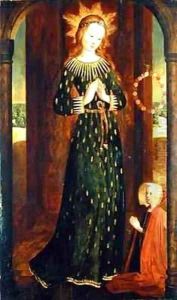Hinrik Funhof Paintings
Hinrik Funhof was a Gothic painter and woodcarver who was active in the late 15th century; however, his exact birth and death dates are not recorded or widely known. Most of the information we have about Funhof comes from the works he left behind and the historical records of the places where he was active.
Funhof's artistry was primarily centered in Northern Europe, and he is considered one of the notable figures of the Northern Gothic tradition. His work is characterized by the intricate detailing and the expressive, often religious, subject matter typical of the period. The Gothic tradition in which he worked was one where the last vestiges of medieval artistic sensibilities were giving way to the early inklings of the Renaissance that had begun to sweep through Europe.
He is perhaps best known for his involvement with the Altarpiece of St. Luke, which was created for the guild of St. Luke in Lübeck, Germany. This piece, among others, showcases the skill and craftsmanship that were typical of Funhof's work. His style would have combined the rich iconography of the late Gothic with an attention to human emotion and a clarity of form that hinted at the coming changes in art.
Unfortunately, due to the sparsity of surviving records, much of Funhof's life and the breadth of his work remain shrouded in mystery. His contributions, however, are still appreciated by those who study Gothic art and the transition toward the Renaissance. The surviving pieces attributed to him continue to be analyzed for their stylistic and historical significance in the context of late 15th-century European art.
